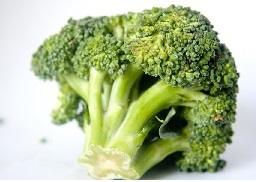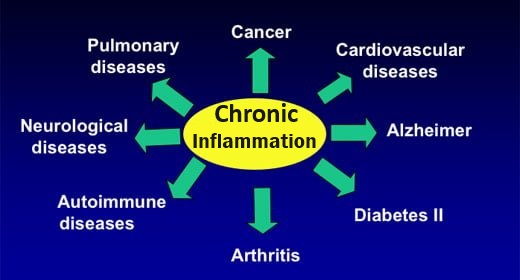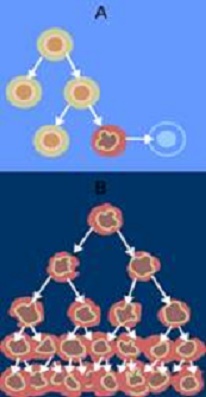"Eat Your Broccoli !" - And fight cancer

Cruciferous vegetables provide sulforaphane (SFN) - a healthful / anti-cancer phytochemical
The crucifer vegetables are from the plant family Cruciferae (also called Brassicaceae ) – include broccoli, brussels spouts, kale, collard greens, cabbage, radish, watercress, mustard seeds, turnip, rutabaga, and cauliflower
Cruciferous vegetables are rich sources of glucosinolates, which the body metabolizes into isothiocyanates such as sulforaphane (SFN) via the enzyme myrosinase. Numerous studies have shown that sulforaphane (SFN) provides a number of health benefits, including anti-cancer properties:
SFN selectively targets benign hyperplasia cells and cancerous prostate cells. Discovered in a study, led by Dr. Emily Ho, associate professor at the Linus Pauling Institute at Oregon State University. Ho also emphasizes that SFN safely leaves normal prostate cells unaffected. Clarke JD et al, 2011
- SFN inhibited the enzyme histone deacetylase (HDAD) that plays a critical role in expression of tumor suppressor genes. It is being pursued from both a pharmaceutical and dietary approach.
- The breakdown product of the compound sinigrin in brassica vegetables seems to prevent pre-cancer cells from multiplying.
A clinical test found that consumed sulforaphane reaches womens’ breast tissue in < 1 hour. Brian S. Cornblatt et al, 2007
Brassica is thought to offer protection against lung and prostate cancers. It is known that the breakdown of sinigrin, a compound found in brassica, seems to kill cancer cells. But the active agent from that breakdown appears to be a chemical (allyl-isothiocyanate, or AITC) created when the vegetables are chopped, chewed and digested. AITC seems to prevent cancer cells becoming “immortal”, the property that makes them different from healthy cells which “commit suicide” instead of dividing infinitely.
A number of studies have shown that SFN can kill microbes – including the bacteria H. pylori, including intracellular (fluids inside cells) and resistant strains. This lends credence to the microbial theory of cancer.

How to best obtain SFN?
Don’t boil your veggies (steaming is best)
- Boiling destroys vital enzyme for SFN formation. A Univ. of Illinois study found that overcooking broccoli destroys the enzyme myrosinase, which is needed for SFN to form. Broccoli powder supplements do not contain myrosinase.
- Boiling leaches glucosinolates into cooking water. Boiling cruciferous vegetables for 9 – 15 minutes decreases total glucosinolate content by 18 – 59 %. “British Journal of Nutrition.”, Sep 2003. Alternatively, steaming, microwaving and stir-frying cruciferous vegetables for 0-20 mins has an insignificant effect on their glucosinolate content
3-day old broccoli sprouts are the richest food source of glucoraphanin, the precursor to SFN. Offering 10 to 100 times more of it, by weight, than mature broccoli plants or cauliflower
Lightly cooked, they taste similar to steamed spinach.
Brussel sprouts and cabbage are also good sources of SFN. Of the cabbages, savoy and red cabbage are particularly high in SFN precursor, glucoraphanin, retaining most phytochemicals when eaten raw E.g. in a coleslaw..
| 3-day old Broccoli Sprouts | Brussels Sprouts | Chopped Savoy Cabbage | Chopped Red Cabbage | |
| Total glucoraphanins | 1 oz. = 73 mg | ½ Cup = 104 mg | ½ Cup = 35 mg | ½ Cup = 29 mg |
“Proceedings of the National Academy of Sciences.” , Sep 1997.

References
Brian S. Cornblatt, Lingxiang Ye, Albena T. Dinkova-Kostova, Melanie Erb, Jed W. Fahey, Navin K. Singh, Min-Shue A. Chen, Tracey Stierer, Elizabeth Garrett-Mayer, Pedram Argani, Nancy E. Davidson, Paul Talalay, Thomas W. Kensler, Kala Visvanathan, Preclinical and clinical evaluation of sulforaphane for chemoprevention in the breast, Carcinogenesis, Volume 28, Issue 7, July 2007, Pages 1485–1490, https://doi.org/10.1093/carcin/bgm049 PubMed
Clarke JD, Hsu A, Yu Z, Dashwood RH, Ho E. Differential effects of sulforaphane on histone deacetylases, cell cycle arrest and apoptosis in normal prostate cells versus hyperplastic and cancerous prostate cells. Mol Nutr Food Res. 2011 Jul;55(7):999-1009. doi: 10.1002/mnfr.201000547. Epub 2011 Mar 4. PMID: 21374800; PMCID: PMC3129466. PubMed

















